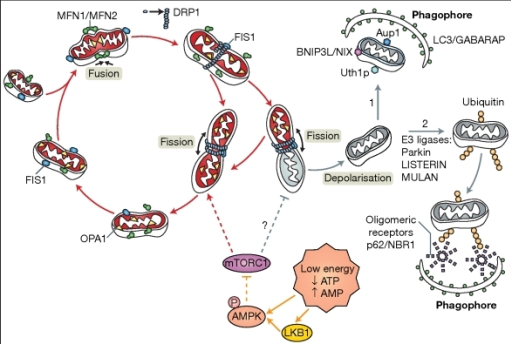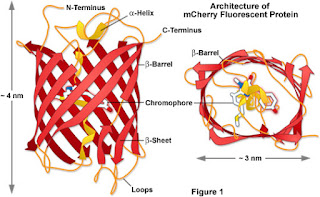Day 20: Analysing the effect of Oxygen glucose deprivation on C17.2 cells
upon the treatment of peptides TAT, Myr-p110, and TAT-p110
The cytotoxicity of the control wells remained similar in the presence and absence of oxygen and glucose. The TAT seemed to be effective after 1.5 hour oxygen glucose deprivation by reducing the cytotoxicity in the cells, ie, less LDH release, however, the cytotoxicity increased from 5% to 15% at 3 hours oxygen glucose deprivation. There is a similar trend with the Myr-p110 peptide, which significantly reduced cytotoxicity at 1.5 hour oxygen glucose deprivation but then increases in LDH were detected at 3 hour oxygen glucose deprivation, raising cytotoxicity to 16% as well. The TAT-p110 peptide seemed to gradually reduce the extent of LDH leaking out of cells as the duration of oxygen glucose deprivation was extended, starting at 16% in the control, reducing to 14% and reducing further to 3%, suggesting that it was effective in prolonging the cell's life.
Aim: to assess the affect of OGD on C17.2 cells after 1.5
hours and 3 hours by assaying LDH, Hoechst and MTT.
Reason for assaying LDH: LDH is lactate dehydrogenase which
catalyses the conversion of pyruvate -> lactate during anaerobic
respiration. Anaerobic respiration only involves the process of glycolysis
which occurs only in the cytosol. Thus, if the peptides became cytotoxic to the
cells, then the lactate dehydrogenase would leak out into the medium and
therefore be detectable by increased absorbance and less transmission.
Reason for assaying Hoechst: Hoechst specifically stains
nuclei blue. If there are more nuclei present this means that less cells have
died as a result of cytotoxicity. If there are less nuclei present this means
that more cells have died as a result of cytotoxicity. It is required that we
make a blank and then a treated plate with MTT and DMSO to observe the
difference in cytotoxicity of the peptides.
Reason for assaying MTT: The MTT assay is a colorimetric
assay for assessing cell metabolic activity. NAD(P)H-dependent cellular
oxidoreductase enzymes may, under defined conditions, reflect the number of
viable cells present. These enzymes
are capable of reducing the tetrazolium dye MTT to its insoluble formazan,
which has a purple color. MTT also makes media turn a brown colour.
The experiment set
out:
The LDH assay:
- There are 3 24 well plates and thus there were 48 wells in
total. Ensure to make enough for 50 wells to account for pipetting error.
- 50 μl samples are required for each well in the 96 well plate. The type of LDH assay conducted was the LDH Roche assay and this has two different bottes: red cap and blue cap. Therefore a total of 50 x 80 = 4 ml needed in total.
- 50 μl samples are required for each well in the 96 well plate. The type of LDH assay conducted was the LDH Roche assay and this has two different bottes: red cap and blue cap. Therefore a total of 50 x 80 = 4 ml needed in total.
Explanation: we want for 50 μl instead of 100 μl, therefore
we need to divide the values by 100 to see how much we need for 1 . For the ml
values, multiply by 1000 first before dividing by 100 to get the value into μl.
Example: for 250 μl, divide by 100 to make 2.5 μl.
Example 2: for 11.25 ml, multiply by 1000 to get 11250 μl hen divide by 100 to make 112.5 μl. This is for 1 100 test. Due to the fact that we only need a 50 μl test, divide the values by two to give 1.25μl and 56.25μl respectively
Example 2: for 11.25 ml, multiply by 1000 to get 11250 μl hen divide by 100 to make 112.5 μl. This is for 1 100 test. Due to the fact that we only need a 50 μl test, divide the values by two to give 1.25μl and 56.25μl respectively
Therefore the LDH assay: 1.25 μl of blue cap bottle and
56.25 μl of the red cap bottle for a 50 μl test instead of 100 μl PER 1x 50 μl
TEST.
There are 72 wells in total, but scale up to 80 wells to
ensure to account for pipetting errors, therefore:
For the bottle 1 blue cap: 80 x 1.25 μl = 100 μl
For the bottle 2 red cap: 80 x 56.25 μl = 4.5 ml
For the bottle 2 red cap: 80 x 56.25 μl = 4.5 ml
- Prepare these volumes and place it into a 15 ml falcon
tube and put it in ice.
Result for Hoechst Assay:
In general, the peptides seemed to be effective in cell survival upon oxygen glucose deprivation.
Result for MTT Assay:
The MTT result was very variable and did not follow a general trend, nor did it show that the peptides were definitely improving or hindering mitochondrial function. I will hopefully be able to repeat this experiment to assess the validity of the results I have obtained.










Comments
Post a Comment